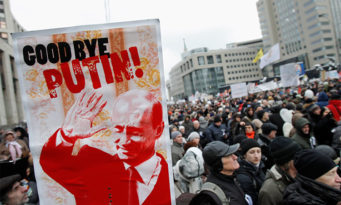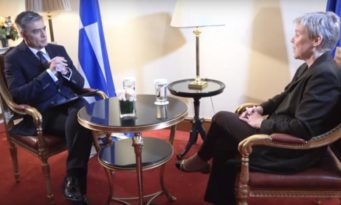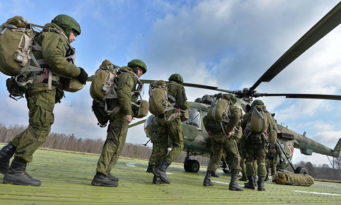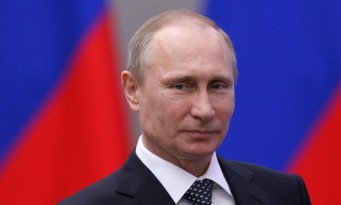What would make the Warsaw Summit a Success?
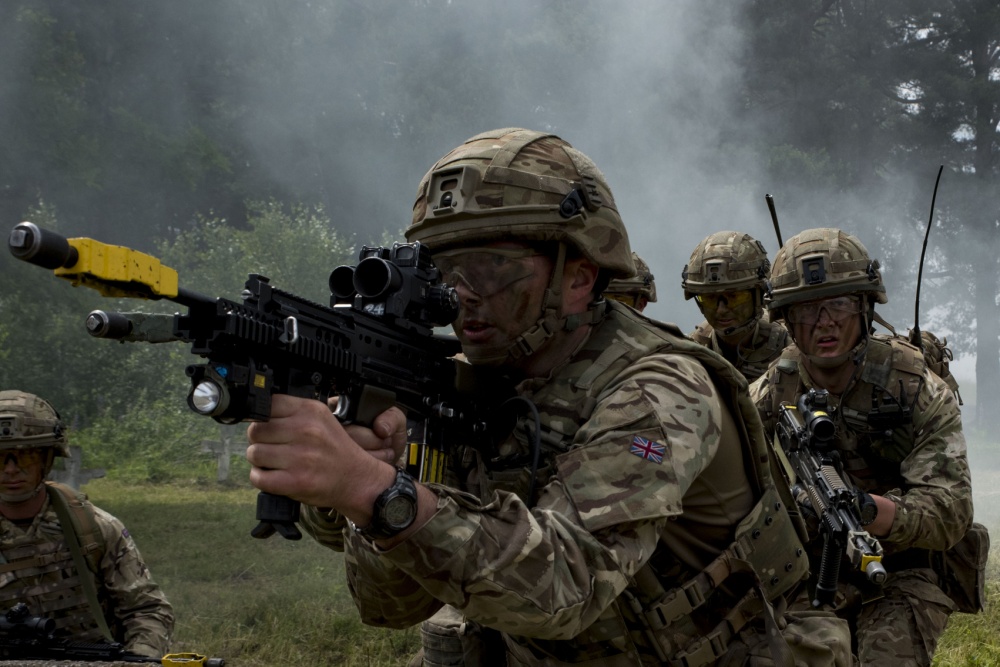
- By Octavian Manea
The success of the Warsaw Summit is ultimately going to be determined by the implementation of NATO’s decisions in three core areas.
Strengthening deterrence was a main focus at the latest NATO summit in Warsaw. However beyond deploying rotational boots on the ground as part of the enhanced forward presence on the Eastern Flank, a key issue that remains after Warsaw is what kind of capability will the Alliance develop to protect its ability to reinforce them and preserve its access to an increasingly contested Baltic ecosystem. We spoke to Ian J. Brzezinski , Senior Fellow at Brent Scowcroft Centre on International Security, Atlantic Council. He served as Deputy Assistant Secretary of Defence for Europe and NATO Policy (2001-05).
What is the impact of the access-denial build up that we see in Crimea for the regional Black Sea ecosystem? It seems that we have a second Kaliningrad, a “Kaliningrad of the South”.
After the Russians seized Crimea they began a very steady program of increasing their defence capabilities on the peninsula. They have announced plans to base Iskander medium-range ballistic missiles. They are deploying new submarines, advanced aircraft and state of the art air-defence systems in the Black Sea and Crimea. These are the core elements of an anti-access/area denial (A2/AD) bubble that leverages the geography of Crimea to cover much of the Black Sea region. A2/AD capabilities are not only useful for defence, but they can also be useful for offence because they enable an aggressor’s forces to operate with greater impunity. When you have a confrontational relationship with a country like Russia which has declared the NATO Alliance to be an adversary that is a significant strategic concern not only for a country like Ukraine - which Moscow has already invaded - but also for countries like Romania, Bulgaria, Turkey or Georgia.
Overall, Crimea is a strategic pivot point in the Black Sea region. He who controls Crimea controls a significant geographical advantage. If you look at the arcs of coverage that extend from Crimea be it coastal batteries, air-defence systems, aircraft systems, ballistic or cruise missiles one could cover the whole Ukrainian coast line if not even most of the Romanian coastline.
Do you see a role for Ukraine and Georgia participating in a potential NATO maritime alignment to counter the Russian threat in the Black Sea?
The opportunity has always been there. It has been a failure of Black Sea NATO allies to fully leverage that opportunity. The roots of that failure include differing national agendas and Montreux Convention governing international access to the Black Sea. Turkey has historically been skeptical of a greater NATO role in the region. While the opportunity has always been there, clearly today there is an urgency for collaboration. I am hoping that the Warsaw Summit commitment to increase its role in the Black Sea region will catalyse collaboration in the air and sea domains of both NATO members and NATO partners in that region.
Should we have an Air-Sea battle philosophy for approaching the Russian A2/AD threat in the Black Sea?
I am a little less worried about the doctrine at this point than I am about the capabilities that the Alliance should be developing and demonstrating against the A2/AD challenge posed by Russia. If you are going to address an opponent’s A2/AD environment you are going to need capabilities to counter those A2/AD systems. You will need strike capacities to destroy enemy missiles, aircraft and coastal batteries and air and missile defences to protect your forces from enemy missiles and aircraft as well as Anti-Submarine Warfare (ASW) capacities to counter enemy submarines and Intelligence, Surveillance, and Reconnaissance (ISR) capacities to warn against attacks and to identify targets in the event of conflict.
We can have a long debate whether Air-Sea battle is the right doctrine but that doctrine is useless without the necessary capacities in place. I am interested in what kind of strike capacities and ISR assets the Alliance is going to incorporate to its forward posture.
Is the Alliance ready to deal with the emerging capability gap especially when we are talking about capabilities to counterbalance the A2/AD bubbles?
Over the last year or so the Alliance has taken steps to shift from assurance to more of a deterrence posture. It has increased the readiness of its armed forces. There has been a notable reversal in the decline of European defence budgets. But because we are at the beginning of this trend, one should not exaggerate it, but the reversal is real and gives credibility to the commitments by allies to bring up their spending at 2% GDP. The Warsaw Summit reflected greater awareness of and determination to address the challenges posed by Russia’s increasingly aggressive military posture.
The question will be how far will NATO’s revitalisation of its readiness go and how enduring will it be? We see a lot of political promises, but until the cash is delivered and the investment is made we have to hold our breath. That said, there is a lot that can be done with the current forces. I am little bit dismayed that the Alliance had such a tough time generating the forces for its enhanced forward presence. As an American I have criticised my president for the withdrawal of US forces in Europe, but I do have to point out that he did reverse course, he committed to send an armoured brigade combat team back to Europe. He will complement that with pre-positioned equipment set for another armoured brigade. President Obama committed a US battalion to be positioned in Poland as part of NATO’s enhanced forward presence. It is stunning to me that the Western and Southern European allies were only able to generate two battalions. That is not equitable burden sharing. The West European allies should be contributing more robustly to NATO’s Enhanced Forward Presence (EFP).
What would make the Warsaw Summit a successful one from your perspective?
The success of the Warsaw Summit is ultimately going to be determined by the implementation of its decisions in three core areas: NATO’s EFP; how NATO addresses the re-emergent grey zone in Europe’s strategic landscape and most importantly the relationship with Ukraine; and burden sharing.
Regarding EFP, the Alliance announced it will deploy battalion level elements in each of the Baltic states and Poland. But it is still not clear what capabilities come with those forces yet. Battalions are not significant elements when they are juxtaposed against Russia’s Western military district which has tens of thousands of troops that are rapidly mobilisable, rapidly deployable and equipped for high-intensity combat. These Russian forces have repeatedly demonstrated their readiness to rapidly mobilise and deploy for the purpose of seizing territory along Russia’s frontier, through exercises.
If these battalion level elements are going to be an effective deterrent they are going to have some level of survivability, some ability to impose pain and costs to the aggressor and confidence that NATO will be able to reinforce them very rapidly in a highly contested A2/AD battlefield environment.
So the questions to ask now about EFP is what ISR, air defence, air and missile defence capability will these battalions have to minimise the risk of a surprise attack and to endure under such an attack. What kind of lethality will they have to impose on the aggressors? Toward this end, these battalions will need some anti-armour capabilities, perhaps even their own artillery and tanks.
Finally the Alliance needs to have the plans, the capability and the readiness to rapidly reinforce these units particularly the ones deployed in the Baltic, this requires the capacity to move forces through an A2/AD environment. When will NATO demonstrate that capability and readiness? The Alliance needs to demonstrate this ability in the very near term through brigade and division level exercises. We have to expect that Moscow will closely observe the capability that will accompany NATO’s enhanced forward presence.
Concerning the grey zone that re-emerged in Europe, NATO has to be careful not to just reinforce its Eastern Frontier in a way that basically communicates to Moscow (as well as Ukraine, Georgia and Moldova) that Russia doesn’t have a free hand to operate in those countries. If we don’t significantly deepen the security collaboration with these countries especially Ukraine (by providing the weapons that they need, to defend themselves such as anti-tank and air defence weapons) we will send the wrong message to Moscow, that we will defend the NATO territory and the rest is up for grabs. It is very important that the Summit’s decisions lead to a deepening of NATO’s relations with Georgia, Moldova and Ukraine. Ukraine needs not only lethal assistance but also significant NATO ISR assistance in order to improve their situational awareness. None of these is in any way a threat to the territorial integrity of Russia.
The third dimension is burden sharing. I am worried that the US has committed to quadruple its funding for the European Reassurance Initiative (ERI) to $3.4 billion, redeploy an armoured brigade combat team on a persistent, rotational basis back to Europe, and preposition an equipment set for a second armoured brigade. In contrast, Western Europe has committed only 2 battalions.
This doesn’t sound as a fair deal to me especially when we are talking about Europe’s backyard. Failure to incorporate a more robust West European element into NATO’ enhanced forward presence puts what has been an important, significant but fragile reanimation of transatlanticism in Washington at risk.
Photo: British soldiers prepare to enter and clear a building as Polish soldiers acting as enemy forces return fire during a Military Operations in Urban Terrian training sceneraio June 14, 2016 in Wedzryn, Poland as part of exercise Anakonda 2016.
Credit: Sgt. 1st Class Whitney Hughes







